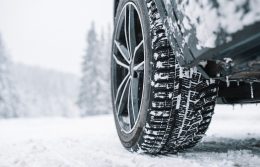Emergency Brake 101
If you think you only need to use the emergency brake with an automatic transmission in, well, an emergency — or on a steep hill — you’re not alone. The name might lead you to believe that, but, as any good driver’s ed teacher will tell you, the emergency brake should be used every time you park.
Yes, every time. Why? For one, it’s a good habit to get into. If you engage the emergency brake, also called the parking brake, each time you park — and then disengage it each time you get back into the car — it will become part of your standard routine and you won’t forget to do either one.
Why You Should Use Your Emergency Brake
There are a few reasons why this is crucial:
- In case your parking pawl ever broke, the emergency brake would keep your car from rolling away.
- If someone happened to hit your car in a parking lot, the e-brake would stabilize it and make it less likely to go flying.
- Not using the parking brake regularly could lead the cables connected to it to become corroded, making it more difficult to engage that brake when you really need it.
The emergency brake operates separately from your regular brakes that you use to slow down and stop. It’s fully mechanical, bypassing the hydraulic system of your main brakes.
When You Shouldn’t Use Your Emergency Brake
There is an exception to using the emergency brake when you’re parked, and that’s when you’re storing your vehicle for an extended period of time. In this case, use a chock (a tire stopper) to keep your car from moving. You don’t want to risk the brake pads and rotors potentially fusing together. Some parking brakes can also freeze up in particularly frigid weather, but that’s an unlikely scenario in Texas.
Everyday Use of Your Emergency Brake
You’ll reduce your risk of damaging your car if you regularly use your parking brake, but you still need good auto insurance for when those unforeseen circumstances do happen. Talk to your Texas Farm Bureau Insurance Agent if you have any questions about whether your policy is the right one for you.
Now that you know when to use your emergency brake, are you well-versed in when to turn on your high beams? In this video, we shed some light on how brights are helpful, the situations in which you don’t want to use them, and why it’s important to switch them off when other cars are nearby.
Coverage and discounts are subject to qualifications and policy terms and may vary by situation. © 2017 Texas Farm Bureau Insurance



